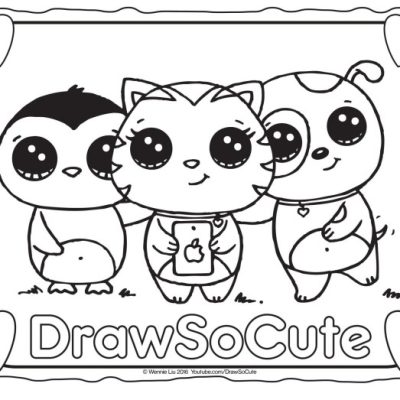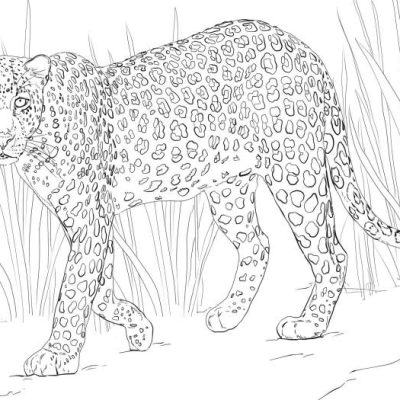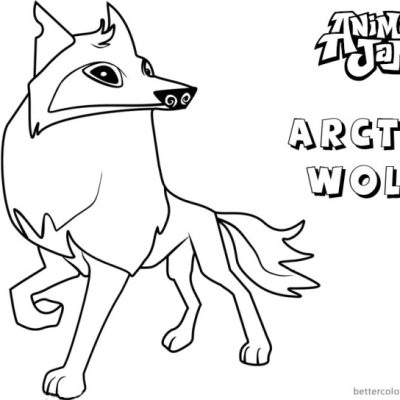Animal Coloring Pages Printable PDF Fun for Kids!
Design and Content Analysis of Animal Coloring Pages
Animal coloring pages printable pdf – Creating engaging and successful animal coloring pages requires careful consideration of design elements and content. A well-designed page balances visual appeal with age-appropriateness and educational potential, fostering creativity and learning.
Line Thickness and Detail Level
Line thickness significantly impacts a coloring page’s usability. Thicker lines are ideal for younger children (beginner level) who may struggle with finer motor skills. Thinner lines, suitable for older children and adults (intermediate and advanced levels), allow for more intricate coloring and shading. The level of detail also correlates with complexity. Beginner pages feature simple Artikels, while intermediate pages add subtle details like fur texture or scales.
Advanced pages might incorporate complex patterns, intricate backgrounds, and overlapping elements.
Complexity Levels in Animal Coloring Pages
Different complexity levels cater to diverse skill sets and age groups.
- Beginner: Simple Artikels of large, recognizable animals like a dog, cat, or elephant. Few details, bold Artikels, large areas for coloring.
- Intermediate: More detailed Artikels, incorporating subtle features like stripes on a tiger, spots on a giraffe, or feathers on a bird. May include simpler backgrounds or patterns.
- Advanced: Highly detailed Artikels, featuring complex patterns, textures (e.g., realistic fur), and potentially overlapping elements. Intricate backgrounds or scenes are also common. Examples might include a detailed portrait of a lion with a realistic mane or a complex scene depicting a variety of animals in their natural habitat.
Sample Animal Coloring Page Design
Imagine a page depicting a vibrant jungle scene. A playful monkey swings from a thick, boldly Artikeld tree branch (beginner level). A slightly more detailed toucan perches on another branch, its beak showcasing subtle shading lines (intermediate level). In the background, a meticulously detailed jaguar hides amidst lush foliage, its spotted coat rendered with intricate patterns (advanced level).
The jungle floor includes simple, large leaves for easier coloring by younger children.
Innovative Approaches to Animal Coloring Page Design
Innovative designs enhance engagement and learning.
- Educational Elements: Incorporating labeling exercises where children identify and color different animal body parts (e.g., labeling the parts of a butterfly). This approach adds an educational dimension, enhancing learning through play.
- Interactive Elements: Adding simple puzzles or mazes integrated into the design, encouraging problem-solving skills in addition to coloring. For example, a maze leading to a hidden animal within the scene.
- Themed Pages: Creating pages centered around specific habitats (e.g., arctic animals, rainforest animals) to provide context and educational value. A page could showcase various arctic animals, with an informative caption about their adaptations to the cold environment.
Accessibility and Usability of Printable PDFs
Creating easily accessible and printable animal coloring pages requires careful consideration of file format, size, and organization. A well-designed PDF ensures a smooth user experience, from download to printing, resulting in vibrant, high-quality coloring pages ready for creative fun.
Ideal File Format and Size for Downloading and Printing
The preferred file format for printable coloring pages is PDF (Portable Document Format). PDFs maintain consistent formatting across different operating systems and devices, ensuring the coloring pages appear as intended regardless of the user’s software or hardware. A recommended file size should balance image quality with download speed. Aim for a file size under 5MB per page for individual downloads, or under 20MB for a collection of pages, to minimize download time.
Larger files may be suitable for higher-resolution images, but consider compressing the images to optimize file size without significantly compromising visual quality. Using lossy compression techniques (like JPEG) on images can reduce file size, while maintaining acceptable image quality for coloring pages.
Animal coloring pages printable pdf offer a world of creative fun, especially for kids. If you’re looking for a specific theme, consider exploring the delightful illustrations available in forest animal coloring sheets , a great resource for adding a touch of wilderness to your printable collection. Then, once you’ve downloaded those, you can print and color your very own animal kingdom.
Educational and Developmental Aspects: Animal Coloring Pages Printable Pdf
Animal coloring pages offer a surprisingly rich landscape for a child’s cognitive development, extending far beyond simple entertainment. The act of coloring engages multiple skills simultaneously, fostering growth in various areas crucial for early learning.Coloring pages featuring animals tap into children’s natural curiosity about the natural world. The vibrant depictions of animals stimulate imagination and encourage creative expression. This process is not merely passive; it actively engages the child in learning through play.
Cognitive Benefits of Animal Coloring Pages
Coloring promotes fine motor skill development. The precise movements required to stay within the lines enhance hand-eye coordination, improves dexterity, and strengthens the muscles in their hands and fingers. This is particularly important for pre-writing skills, preparing children for the challenges of handwriting and drawing. Furthermore, choosing colors, deciding on shading techniques, and creating their own unique interpretations of the animals encourages problem-solving and decision-making skills.
The act of completing a coloring page also builds focus and concentration, vital skills for academic success.
Age Appropriateness of Animal Coloring Page Designs
The complexity of animal coloring pages should be carefully considered based on a child’s age and developmental stage. Simpler designs with large, bold Artikels and fewer details are ideal for younger children (ages 2-4). These pages focus on basic color recognition and motor skill development. As children grow older (ages 5-7), more intricate designs with smaller details and the opportunity for shading and blending can be introduced, challenging their fine motor skills and fostering creativity.
Older children (ages 8+) can benefit from even more complex designs, potentially incorporating elements like patterns and textures, allowing for exploration of more advanced artistic techniques. For example, a toddler might enjoy a simple Artikel of a large, friendly-looking puppy, while an eight-year-old might find a detailed coloring page of a majestic tiger more engaging.
Incorporating Animal Coloring Pages into Educational Settings
Animal coloring pages can be a valuable tool in preschools, kindergartens, and even elementary school classrooms. They can be used to supplement lessons on zoology, habitats, or conservation. For instance, a lesson on jungle animals could be followed by coloring pages of various jungle creatures, reinforcing what the children have learned. Teachers can also use coloring pages as a calming activity during transitions or as a reward for good behavior.
The integration of coloring pages into a lesson plan can make learning more fun and engaging, enhancing knowledge retention and making the learning experience more enjoyable for children.
Integrating Learning Elements into Animal Coloring Page Designs
The potential for educational enrichment is vast. Designs can incorporate simple facts about the animals depicted, such as their habitat, diet, or unique characteristics. For example, a coloring page of a polar bear could include a small fact box mentioning its adaptation to cold climates or its diet of seals. Vocabulary can also be subtly introduced through labels or captions.
This multi-sensory approach enhances learning, connecting visual imagery with textual information. A page depicting various farm animals could include labels like “cow,” “pig,” “sheep,” and “chicken,” reinforcing vocabulary while children color. This method creates a fun and engaging way for children to learn new words and facts, making the learning process enjoyable and memorable.
Illustrative Examples and Descriptions
This section provides detailed descriptions of various animal coloring page designs, highlighting different animal species, environments, design styles, line weights, and color palettes. Understanding these elements is crucial for creating engaging and age-appropriate coloring pages. The examples illustrate the versatility of this simple activity and how design choices impact the final product.
Detailed Descriptions of Three Animal Coloring Page Designs
The following examples showcase the diversity achievable in animal coloring pages.
- Design 1: Majestic Lion in the Savannah. This coloring page features a regal lion, its mane flowing in the wind, amidst the tall grasses of the African savanna. The design employs thick, bold Artikels for easy coloring by younger children. The line weight is consistently thick (approximately 3-4mm if printed at A4 size), making it suitable for crayons or chunky markers. The color palette suggestions range from warm earth tones (browns, tans, yellows) for the savanna to rich oranges and yellows for the lion’s mane, with accents of black for the stripes and details.
- Design 2: Playful Panda in a Bamboo Forest. This design presents a cute, cartoonish panda munching on bamboo. The style is simpler, using thinner lines (approximately 1-2mm if printed at A4 size) and gentle curves. This is ideal for slightly older children who are developing finer motor skills. The color palette is limited, emphasizing black and white for the panda’s fur, contrasting with various shades of green for the bamboo and background.
A touch of pink for the panda’s cheeks adds a playful touch.
- Design 3: Underwater Scene with a Colorful Parrotfish. This coloring page depicts a vibrant parrotfish swimming amongst coral reefs. The design incorporates a variety of line weights, using thicker lines for the main Artikel of the fish and thinner lines for details like scales and fins. This allows for both broad coloring and intricate detail work. The color palette is exceptionally bright and diverse, featuring various shades of blue, green, orange, and purple for the coral and fish, encouraging creative exploration.
Visual Elements of a Coloring Page Featuring a Complex Animal
A coloring page featuring a tiger with intricate stripes requires careful consideration of visual elements to maintain clarity and appeal. The stripes themselves shouldn’t be overly thin or close together, to prevent frustration for young colorists. Larger, bolder stripes are preferable near the edges and gradually become finer towards the center. A balance needs to be struck between intricate detail and colorability.
Areas with less detail, like the face and paws, could be slightly larger, making them easier to color in. The use of negative space (uncolored areas) around the tiger can also enhance the visual impact and make the stripes stand out.
Visual Elements of a Coloring Page Featuring a Simple Animal
A coloring page for toddlers featuring a cartoonish bird should prioritize simplicity and large, easily colorable shapes. The bird’s body should be a single, large shape, with minimal details. The beak, eyes, and feet should be simple, clearly defined shapes, using thick lines. The line weight should be consistent and substantial, ideal for crayons or chunky markers.
The color palette should be limited to 2-3 easily distinguishable colors. For instance, a bright yellow body, black eyes, and orange beak would create a cheerful and easily colored design.
Visual Impact of Different Color Palettes in Animal Coloring Pages, Animal coloring pages printable pdf
The color palette significantly impacts the overall mood and appeal of an animal coloring page. A warm palette (reds, oranges, yellows) creates a cheerful and energetic feeling, while a cool palette (blues, greens, purples) can evoke a sense of calm and tranquility. Monochromatic palettes (variations of a single color) can create a sophisticated look, while complementary palettes (colors opposite each other on the color wheel) offer high contrast and visual excitement.
The choice of palette should align with the animal’s characteristics and the desired atmosphere of the coloring page. For example, a jungle scene might use vibrant, tropical colors, whereas an arctic scene might feature cooler, muted tones.
Structuring Information with HTML Tables
HTML tables offer a powerful way to organize and present data clearly, especially when dealing with comparisons or lists of information. In the context of animal coloring pages, tables can effectively showcase popularity statistics or compare different PDF creation software options. This section demonstrates how to use HTML tables to structure such information for improved readability and accessibility.
Animal Coloring Page Popularity
The following table displays the relative popularity of different animal themes in printable coloring pages, based on estimated online search volume and sales data from various online retailers. Note that these figures are estimates and may vary depending on the source and time of year. The data reflects a general trend rather than precise figures.
| Animal Type | Popularity Rank | Estimated Search Volume (relative) | Typical Page Features |
|---|---|---|---|
| Cats | 1 | High | Variety of breeds, playful poses, cute expressions |
| Dogs | 2 | High | Various breeds, action poses, friendly expressions |
| Birds | 3 | Medium | Colorful plumage, diverse species, realistic and cartoonish styles |
| Wild Animals (Lions, Tigers, etc.) | 4 | Medium-High | Focus on majestic poses, realistic or stylized depictions |
Comparison of PDF Creation Software
Choosing the right PDF creation software is crucial for generating high-quality, printable coloring pages. This table compares the features of several popular options, considering factors relevant to creating and distributing such content. The information presented is based on publicly available specifications and user reviews.
| Software | Ease of Use | Vector Graphics Support | Color Management | PDF/A Compliance | Cost |
|---|---|---|---|---|---|
| Adobe Illustrator | Intermediate | Excellent | Excellent | Yes | Subscription-based |
| Inkscape | Beginner-Intermediate | Excellent | Good | Yes (with plugins) | Free and Open Source |
| Adobe Photoshop | Intermediate-Advanced | Good | Excellent | Yes | Subscription-based |
| GIMP | Beginner-Intermediate | Good | Good | Yes (with plugins) | Free and Open Source |









